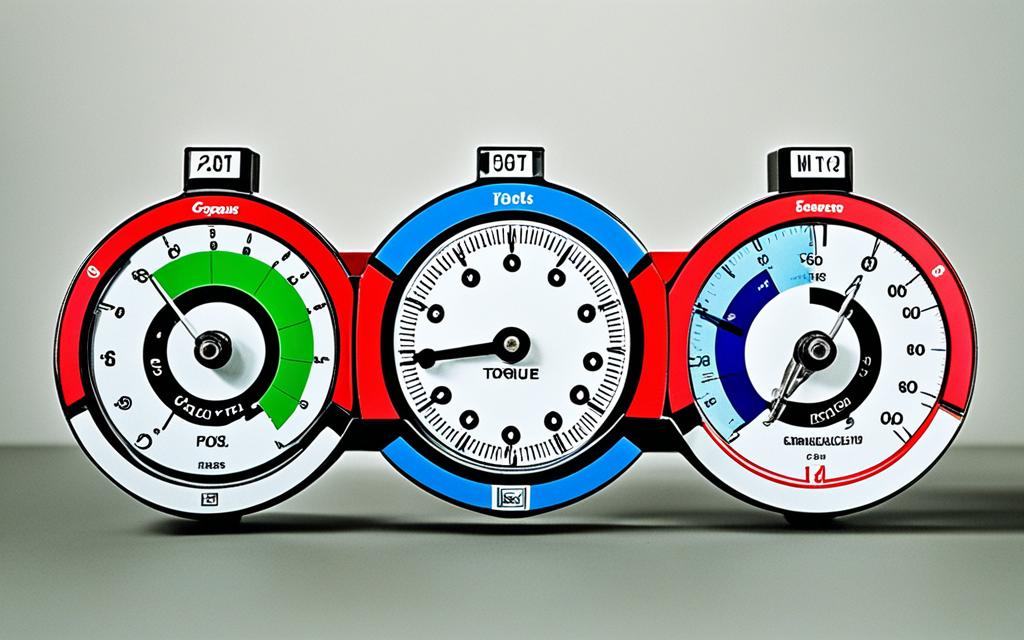Torque, a fundamental concept in physics and engineering, is a measure of the rotational force applied to an object. Understanding the various units of torque is crucial for many applications, from automotive design to mechanical engineering. This article will provide you with a comprehensive understanding of the common units of torque, such as pound-feet, newton-meters, and others, as well as the methods for converting between units. By the end of this article, you will have a solid grasp of the definition of torque and the tools to better comprehend and work with torque-related measurements in your personal or professional endeavors.
What is Torque?
Torque is a measure of the rotational force applied to an object, causing it to rotate or twist around a fixed point or axis. This rotational force is the product of the applied force and the perpendicular distance from the axis of rotation to the line of action of the force. Torque is essential in many areas of physics and engineering, as it plays a crucial role in the design and analysis of various mechanical systems, from simple tools to complex machinery.
Common Units of Torque
When measuring torque, there are several common units of torque that are widely used, each with its own specific applications and characteristics. Some of the most prevalent units of torque include:
| Unit | Description |
|---|---|
| Pound-Feet (lb-ft) | A common unit of torque in the United States, pound-feet measure the rotational force exerted on an object, with one pound-foot being the force of one pound acting at a distance of one foot. |
| Newton-Meters (N-m) | The metric unit of torque, newton-meters measure the rotational force exerted on an object, with one newton-meter being the force of one newton acting at a distance of one meter. |
| Inch-Pounds (in-lb) | A smaller unit of torque used in the United States, inch-pounds measure the rotational force exerted on an object, with one inch-pound being the force of one pound acting at a distance of one inch. |
| Kilogram-Force-Meters (kgf-m) | A metric unit of torque that measures the rotational force exerted on an object, with one kilogram-force-meter being the force of one kilogram-force acting at a distance of one meter. |
These common units of torque are widely used in various industries, from automotive and machinery design to mechanical engineering and beyond. Understanding the differences and relationships between these units of torque is crucial for accurately measuring, analyzing, and applying rotational force in a wide range of applications.
Units of Torque
The units used to measure torque can be divided into two main categories: English units and metric units. The most common English units of torque are pound-feet (lb-ft) and inch-pounds (in-lbs), while the most common metric units are newton-meters (N-m) and kilogram-force-meters (kgf-m).
In the English system, pound-feet (lb-ft) is the primary unit of torque, where the force is measured in pounds and the distance is measured in feet. This unit is widely used in automotive, machinery, and construction industries. Inch-pounds (in-lbs), on the other hand, are more commonly used for smaller applications, such as in electronics and precision instruments.
Conversely, the metric system uses newton-meters (N-m) as the primary unit of torque, where the force is measured in newtons and the distance is measured in meters. This unit is prevalent in international engineering and scientific communities. Kilogram-force-meters (kgf-m) is another metric unit, where the force is measured in kilogram-force and the distance in meters. This unit is primarily used in certain regions and applications, such as in the automotive industry in some countries.
| Unit | Conversion |
|---|---|
| Pound-feet (lb-ft) | 1 lb-ft = 1.356 N-m |
| Inch-pounds (in-lbs) | 1 in-lb = 0.113 N-m |
| Newton-meters (N-m) | 1 N-m = 0.738 lb-ft |
| Kilogram-force-meters (kgf-m) | 1 kgf-m = 9.807 N-m |
Understanding the various units of torque and how to convert between them is crucial for effectively working with and analyzing torque-related measurements in a wide range of applications, from automotive design to mechanical engineering.
Converting Between Units of Torque
To effectively convert between units of torque, it’s crucial to understand the relationships between the common units used to measure this rotational force. Whether you’re working with pound-feet, newton-meters, inch-pounds, or kilogram-force-meters, mastering the unit conversion process will empower you to seamlessly convert torque units and ensure accurate calculations across various applications.
The basic conversion formulas are as follows:
| From | To | Conversion Formula |
|---|---|---|
| Pound-feet (lbf-ft) | Newton-meters (N-m) | 1 lbf-ft = 1.356 N-m |
| Newton-meters (N-m) | Pound-feet (lbf-ft) | 1 N-m = 0.7376 lbf-ft |
| Inch-pounds (in-lbf) | Newton-meters (N-m) | 1 in-lbf = 0.1130 N-m |
| Newton-meters (N-m) | Inch-pounds (in-lbf) | 1 N-m = 8.850 in-lbf |
| Kilogram-force-meters (kgf-m) | Newton-meters (N-m) | 1 kgf-m = 9.807 N-m |
| Newton-meters (N-m) | Kilogram-force-meters (kgf-m) | 1 N-m = 0.1020 kgf-m |
By using these conversion formulas, you can seamlessly convert between units of torque, ensuring accurate measurements and calculations in a wide range of unit conversion scenarios, from automotive design to mechanical engineering and beyond.
Conclusion
In this article, we have explored the various units of torque, a fundamental concept in physics and engineering. We’ve covered the definition of torque, the common units of torque (pound-feet, newton-meters, inch-pounds, and kilogram-force-meters), and the methods for converting between these units.
Understanding torque units is crucial for individuals and professionals working in fields such as automotive design, mechanical engineering, and industrial machinery. By familiarizing yourself with the different units and their conversion factors, you’ll be better equipped to accurately measure, analyze, and apply torque-related principles in your work.
Whether you’re designing a new mechanical system, troubleshooting an existing one, or simply working with torque-based measurements, this comprehensive guide has provided you with the necessary knowledge and tools to understand and apply torque units effectively. By mastering these concepts, you’ll be able to make more informed decisions, optimize system performance, and drive innovation in your respective industries.










